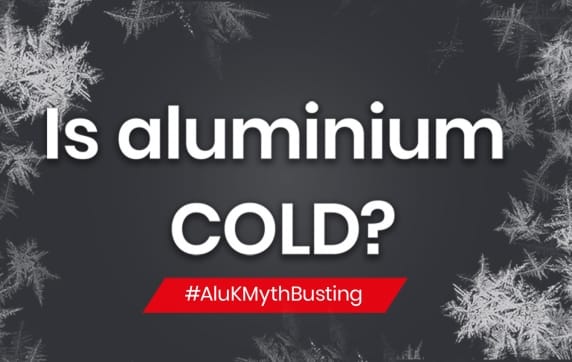Myth-Busting; Is Aluminium Cold?
The idea that aluminium is cold goes right back to the early days of aluminium windows and doors in the late 70s when they were manufactured without a thermal break. In reality, most aluminium windows now use a polyamide or even expanded polyurethane form barrier to separate the internal and external faces of the aluminium. There are some exceptions to this in tropical regions of the world but, in the UK, the climate and the Building Regs mean that window systems are manufactured to ensure that the internal face of aluminium will never be too cold
Thermal breaks work on the same principle as a gas filled double or triple glazed unit by introducing a low conductive material to prevent conductive thermal energy loss from either the inside to the outside or vice versa.
In early aluminium windows, it was a liquid resin which was poured into the profile when it was extruded as one; and in some older installations, that hardened glossy resin is still visible. Since the 2000s though, polyamide has been the preferred material and internal and external profiles have been extruded separately and rolled onto a thermal strip.
Polyamide is potentially a thousand times less conductive than the aluminium itself and it can be shaped to produce the multiple thermal chambers which optimise thermal performance. It also has the similar mechanical and heat coefficient properties as aluminium, so profiles retain their inherent strength, rigidity and resistant to extreme temperatures.
In terms of overall thermal efficiency of course, aluminium windows and doors are more than capable of matching the performance of PVC-U. Typical values are between 1.0W/m2K and 1.4W/m2K depending on whether they are triple or double glazed, giving specifiers lots of flexibility in terms of calculating heat loss.
The size of the thermal break also has a direct impact on the acoustic efficiency.


